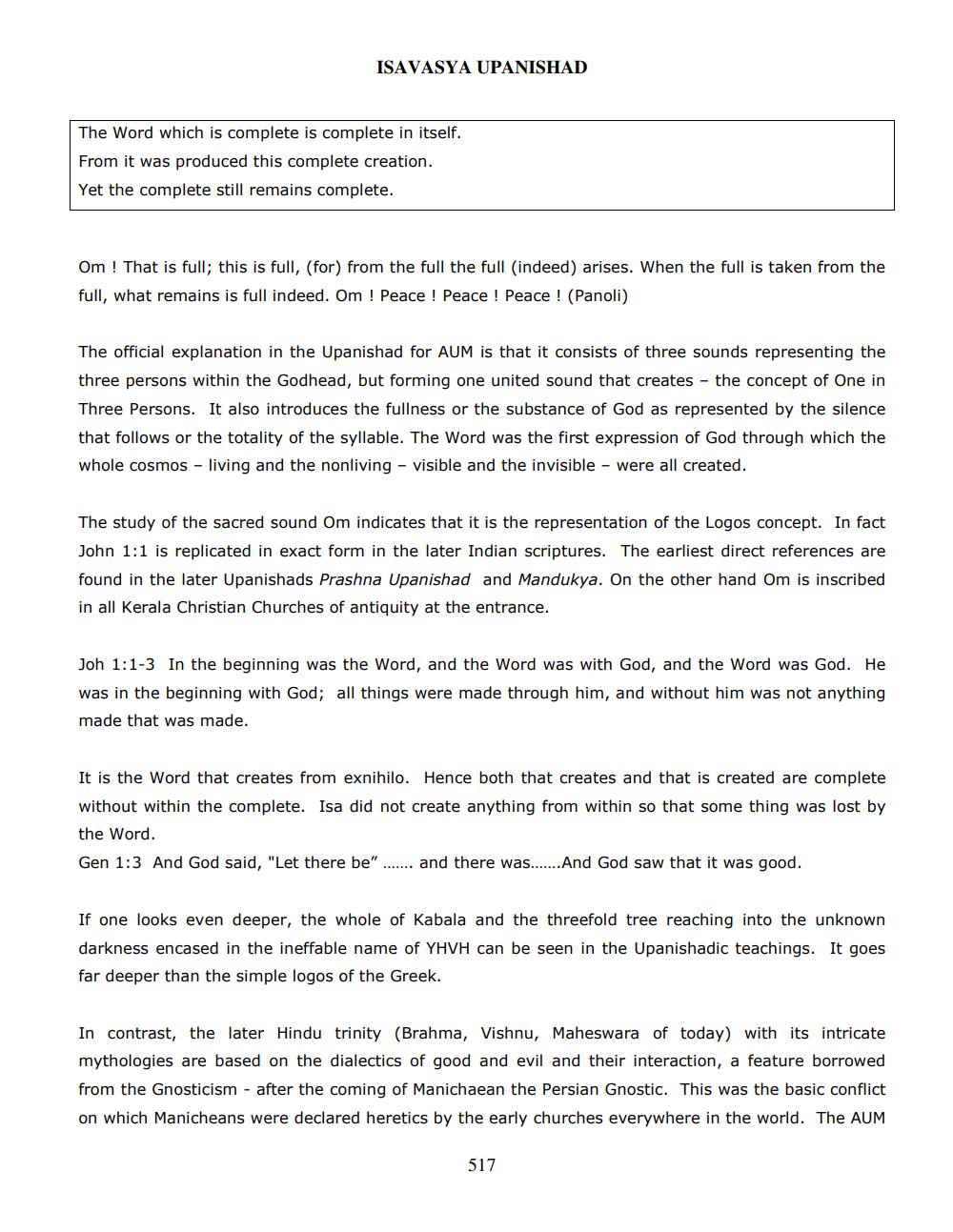________________
ISAVASYA UPANISHAD
The Word which is complete is complete in itself. From it was produced this complete creation. Yet the complete still remains complete.
Om ! That is full; this is full, (for) from the full the full indeed) arises. When the full is taken from the full, what remains is full indeed. Om ! Peace ! Peace ! Peace ! (Panoli)
The official explanation in the Upanishad for AUM is that it consists of three sounds representing the three persons within the Godhead, but forming one united sound that creates - the concept of One in Three Persons. It also introduces the fullness or the substance of God as represented by the silence that follows or the totality of the syllable. The Word was the first expression of God through which the whole cosmos - living and the nonliving - visible and the invisible - were all created.
The study of the sacred sound Om indicates that it is the representation of the Logos concept. In fact John 1:1 is replicated in exact form in the later Indian scriptures. The earliest direct references are found in the later Upanishads Prashna Upanishad and Mandukya. On the other hand om is inscribed in all Kerala Christian Churches of antiquity at the entrance.
Joh 1:1-3 In the beginning was the Word, and the Word was with God, and the Word was God. He was in the beginning with God; all things were made through him, and without him was not anything made that was made.
It is the Word that creates from exnihilo. Hence both that creates and that is created are complete without within the complete. Isa did not create anything from within so that some thing was lost by the Word. Gen 1:3 And God said, "Let there be" ....... and there was.......And God saw that it was good.
If one looks even deeper, the whole of Kabala and the threefold tree reaching into the unknown darkness encased in the ineffable name of YHVH can be seen in the Upanishadic teachings. It goes far deeper than the simple logos of the Greek.
In contrast, the later Hindu trinity (Brahma, Vishnu, Maheswara of today) with its intricate mythologies are based on the dialectics of good and evil and their interaction, a feature borrowed from the Gnosticism - after the coming of Manichaean the Persian Gnostic. This was the basic conflict on which Manicheans were declared heretics by the early churches everywhere in the world. The AUM
517




